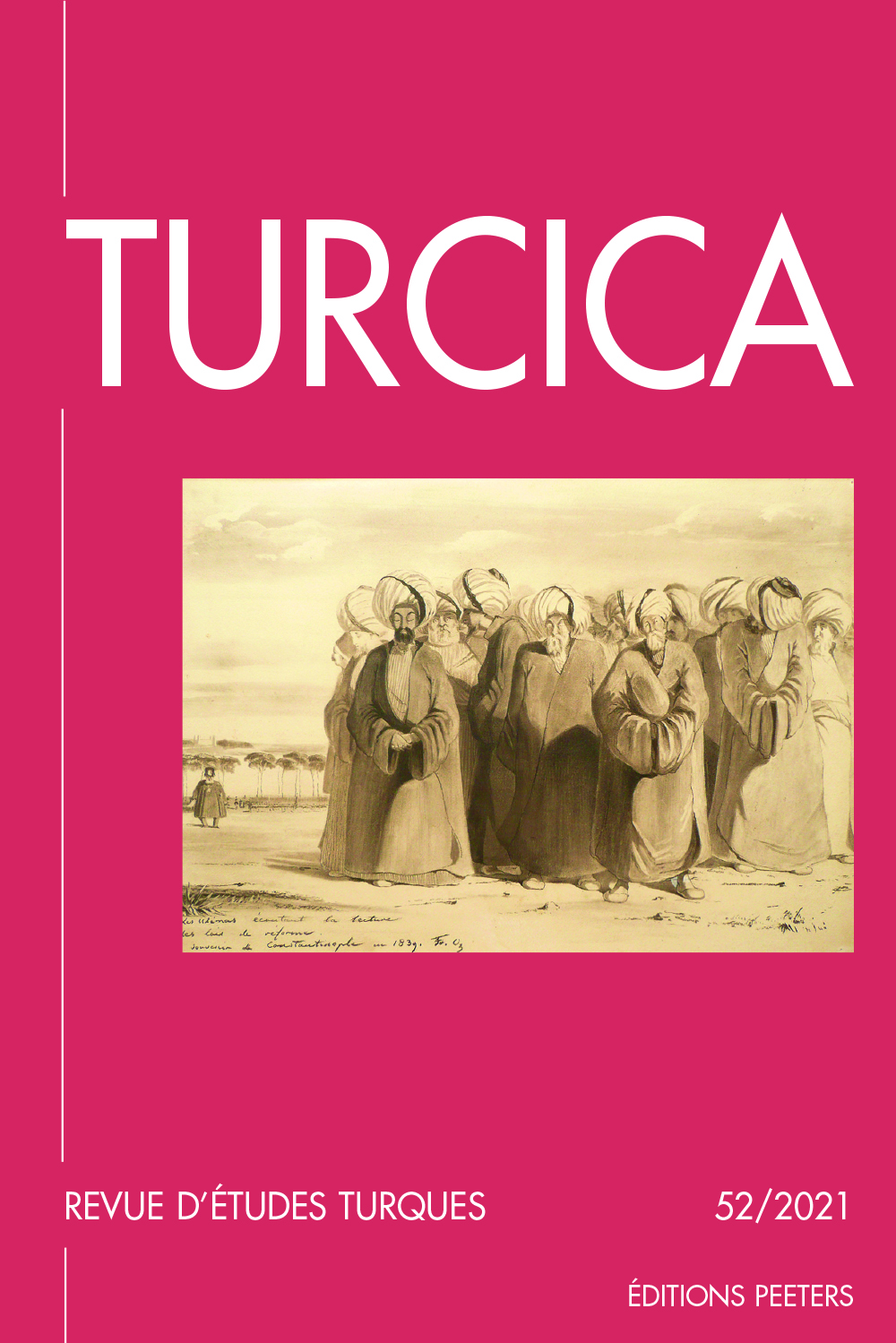 previous article in this issue previous article in this issue | next article in this issue  |

Preview first page |
Document Details : Title: Prédication nominale et verbale à valeur d'attribution de propriété en turc contemporain Author(s): URAS YILMAZ, Arsun Journal: Turcica Volume: 31 Date: 1999 Pages: 439-460 DOI: 10.2143/TURC.31.0.2004196 Abstract : Cet article a pour objet de démontrer, dans le cadre de l’énonciation, les constructions morpho-syntaxiques et intonatives de la prédication nominale et verbale ayant une valeur d’attribution de propriété. Le prédicat d’attribution de propriété qui est souvent traduit en français par le verbe «être», a principalement deux réalisations linguistiques morphologiquement différentes: 1. la première est la prédication nominale analysée sous le titre de «Prédicat d’attribution de propriété sans marqueur explicite»; 2. la seconde est la prédication verbale analysée sous le titre de «Prédicat de mise en relation de deux éléments avec la marque prédicative OL-». Il est alors apparu que: a) les marques suprasegmentales sont indispensables pour assurer la cohésion de la prédication nominale (ø); b) les constituants segmentaux sont le plus souvent suffisants pour assurer la cohésion de la prédication verbale (avec OL-). Dans la prédication nominale (ø), j’ai remarqué que la fonction prédicative est assurée par l’intonation, alors que dans la prédication verbale (avec OL-), il y a plutôt complémentarité des marques segmentales et de l’intonation en raison de l’explicitation et de l’enchaînement des marques morphologiques de nature prédicative. Nominal and verbal predication to property attributon value in the modern Turkish language This article aims to démonstrate, with in framework content of enunciation, the morphosyntaxic and intonative constructions of the nominal and verbal predication having a property attribution value. The predicate of property attribution, which is often translated in French by the verb «to be» (être), has chiefly two morphologically different linguistics realizations: 1. The first is the nominal predication analysed under the title of «Predicate of property attribution without explicit marker» 2. The second is the verbal predication analysed under the title of «Predicate of the placement relationship of two elements with the predicative mark OL-». It then becomes evident that; a) the suprasegmental markers are essential to ensure the cohesion of the nominal predication (ø), b) the segmental constituents componants are in most cases sufficient to ensur the cohesion of the verbal predication (with OL-). In the nominal predication (ø), I remarked that the predicative function is assured by intonation, while in the verbal predication (OL-), there is rather complementarity of segmental markers and of intonation due to the clarification and linking of the morphological markers of a predicative nature. |
 |


